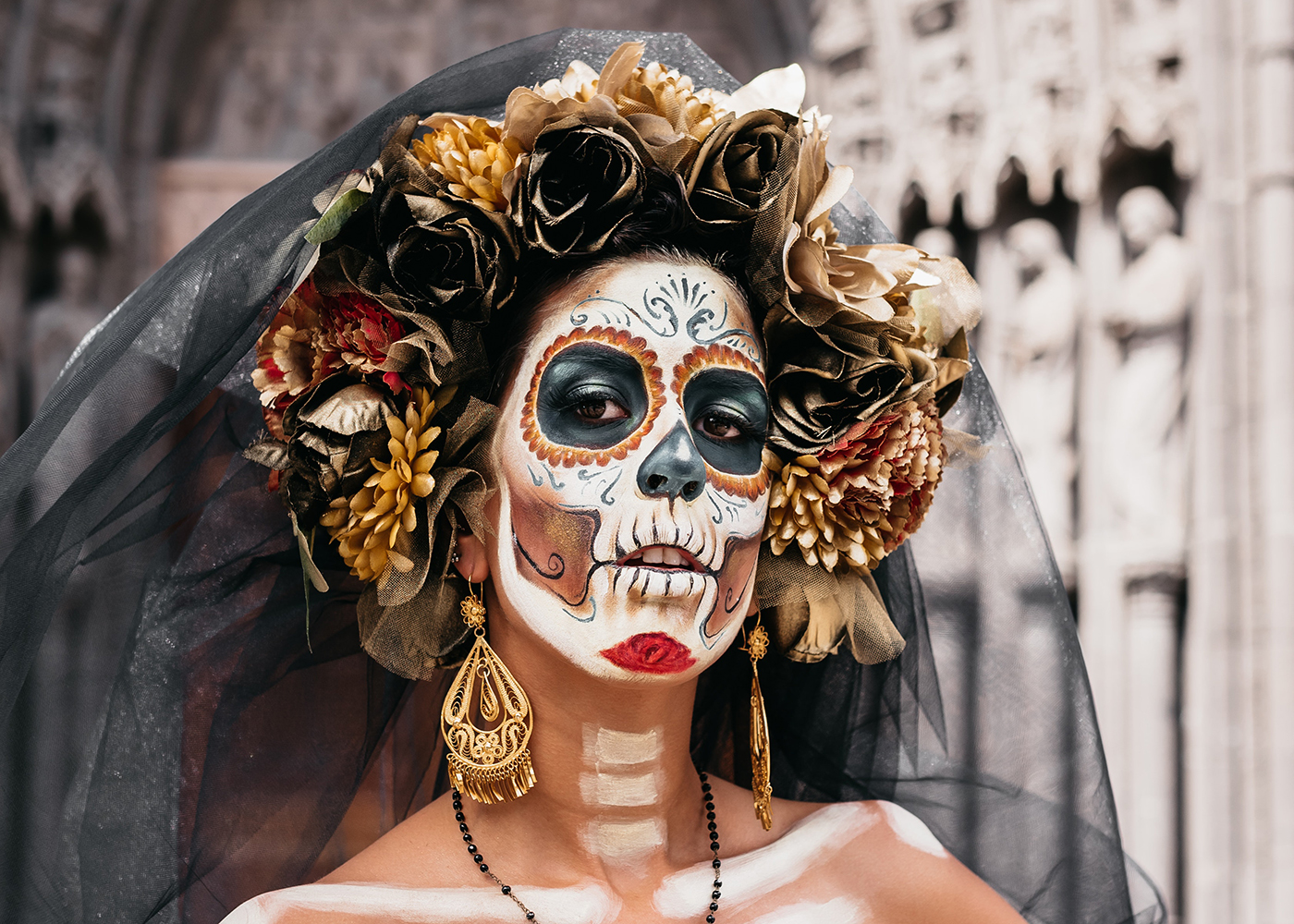
What is Day of the Dead?
Day of the Dead, or Día de los Muertos (also Día de Muertos) is observed in Mexico, in the U.S. among those with Mexican heritage, and in several other countries around the world. The holiday honors the lives of deceased family members.
When is Day of the Dead?
Día de Muertos is celebrated the first two days in November. Often, November 1 commemorates children and infants who have passed (Dia de los Inocentes) and November 2 is the day to remember deceased adults (Dia de los Difuntos.)
The Origin of Day of the Dead
Dia de Muertos blends elements of two consecutive Catholic holy days, All Saints Day (November 1) and All Souls Day (November 2), with practices common to ancient Mexican festivals.
Some ancient cultures considered death another phase of life’s continuum. As part of Pre-Columbian rituals that honored the dead, families provided food, water and tools to help the departed make the difficult journey through the afterlife.
Echoes of these rituals persist in modern Dia de los Muertos traditions.
On Día de Muertos, it is said the boundary gets thin between the world of the living and the world of the dead, making it easier for deceased family members to return. Families lay out gifts of food and flowers to encourage the dead to visit the living for a short while.

History of Day of the Dead
Superficially, certain Day of the Dead symbols, like skulls and skeletons, echo familiar Halloween symbols. However, the two holidays are not interchangeable.
Día de Muertos focuses on love and respect for deceased family members and a desire to keep their spirits alive in the hearts of living family members. Celebrations feature food, music and song as families remember loved ones who have passed.
Dia de Muertos Customs
Some customs connected with Dia de los Muertos go back 3000 years or more, while others are more recent.
Altars/Ofrendas
In homes and cemeteries, families build ofrendas, or altars, and fill them with many offerings meant to entice relatives to return for a feast held in their honor. An ofrenda may contain water or alcoholic beverages, bread, salt, a favorite meal, incense, flowers, candles, chocolate, sugar skulls and treasured family photographs.

Sugar Skulls/Calaveras
Italian missionaries brought the sugar skull tradition to Mexico in the 1600s. These colorful and elaborately decorated skulls are one of the most widely recognized symbols of Día de Muertos. Traditionally made from sugar pressed into molds, many calavera offered today are decorated with sequins, foil, feathers and beads and are not edible.
On Día de Muertos, many people paint their faces in elaborate designs reminiscent of calavera. Their artistic and beautiful catrina makeup is another reason some people who aren’t very familiar with Día de Muertos confuse it with Halloween.
Calacas/Skeletons
While bones are associated with both life and death, calacas became a political symbol in the early 20th Century. José Guadalupe Posada satirized upper class Mexicans who turned away from their heritage in cartoons featuring skeletons dressed in fine clothes. The imagery was meant to remind them that, no matter one’s social class, everyone dies.
Papel Picado/Paper Flags
Papel picado flags feature elaborate designs cut into colored tissue paper. On Día de Muertos, you’ll often find papel picado banners incorporated into ofrendas and hanging throughout the streets. Delicate Day of the Dead paper flags represent the fragility of life.
Marigolds
With their bright color and pungent scent, marigolds are said to help lead souls back to their earthly resting place. Marigolds frequently are used to decorate Day of the Dead altars and arches. Sometimes their petals are strewn to create a path on the ground for the souls of the deceased to follow.
Feliz Día de los Muertos
Far from being a scary or mournful holiday, those who celebrate Día de Muertos take joy in remembering loved ones who have passed. They share memories of the deceased and celebrate in a way that beautifully affirms life while acknowledging its eventual passing.